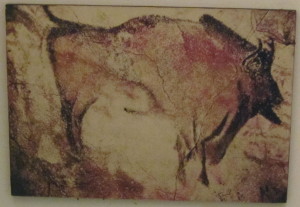Understanding What ‘Story’ Is

Storytelling is a (perhaps overused) buzzword today in just about any field that involves communication — from education and government training to marketing and PR (especially marketing and PR).
It’s an essential tool for digital media that, if used well, can make or break a product, a cause and even an entire business.
Before I start talking more in-depth about great storytelling, I want to delve into a few fundamentals.
What, exactly, is a story? What is storytelling? Why does a good story hold power over us? How does it fit within the digital ecosystem? I’ll explore these questions in future posts.
Often, we do things because everyone says we should. But to be great at doing them, we need to understand the basics. So, with that in mind, let’s look at what story is, in its basic form.
Story: A series of connected events, true or fictitious, that is written or told* with the intention of entertaining or informing; narrative; tale; anecdote ~definition from “Webster’s New World College Dictionary”
(*I would modernize that by adding “or conveyed through images”)
Notice I added bold emphasis to the words entertaining and informing.
That is the core purpose of every story — to inform or to entertain, and preferably both.
The nuances, of course, are a lot more complicated. A successful story needs structure, conflict, plot etc. (more on all these later). But if you zoom in on the words “inform” and “entertain,” your story, whether simple or complex, has a much better chance of leaping from the readers’ or viewers’ screens and into their part of the brain that matters (more on this later, too).
Storytelling is, essentially, the presentation of stories, or narratives. It’s a simplistic definition and doesn’t cover the fact that storytelling is an art form — but, once again, keep the words “informing” and “entertaining” at the top of your agenda, and your storytelling has better chances of attracting eyeballs (if that’s what you’re after).
If you’re not informing or entertaining through your storytelling, you should start investing your precious time and money into something that doesn’t require either one.

Myths, a Great Storytelling Example (Still)
Cave drawings are among the oldest forms of storytelling but as far as the written word, one of the oldest stories recorded is “The Epic of Gilgamesh.”
Anyone who’s taken a college lit class is familiar with this mythological tale of Gilgamesh, the king of Uruk. Two-thirds god and one-third man, he befriends the wild beast Enkidu and together they take a perilous journey to defeat a wild bull. In the second part of the epic poem, Gilgamesh, distressed by Enkidu’s death, goes on another dangerous journey to find eternal life (and in the end comes to grips with his own mortality).
Why is the myth of Gilgamesh relevant to the digital media storyteller?
Myths are among the first stories created by humankind — and many have survived through centuries. Writer and mythologist Joseph Campbell said that part of the staying power of myths is due to their universal themes. For today’s storyteller, that’s a powerful takeaway: Universal themes help us relate, feel the pain of the “character,” even fuel our hopes.
“Throughout the inhabited world, in all times and under every circumstance, myths of man have flourished; and they have been the living inspiration of whatever else may have appeared out of activities of the human body and mind.”
~Joseph Campbell, in “The Hero with a Thousand Faces”
If you’re trying to figure out what makes a great story, spend a few hours studying some stories from mythology. Or the Bible. Or fairy tales if you prefer.
They are all stories that have left an impression on one generation after another. And at their core, they all fit the dictionary’s definition to a T: They tell a series of connected events, true or fictitious, whose intention is to entertain or inform.